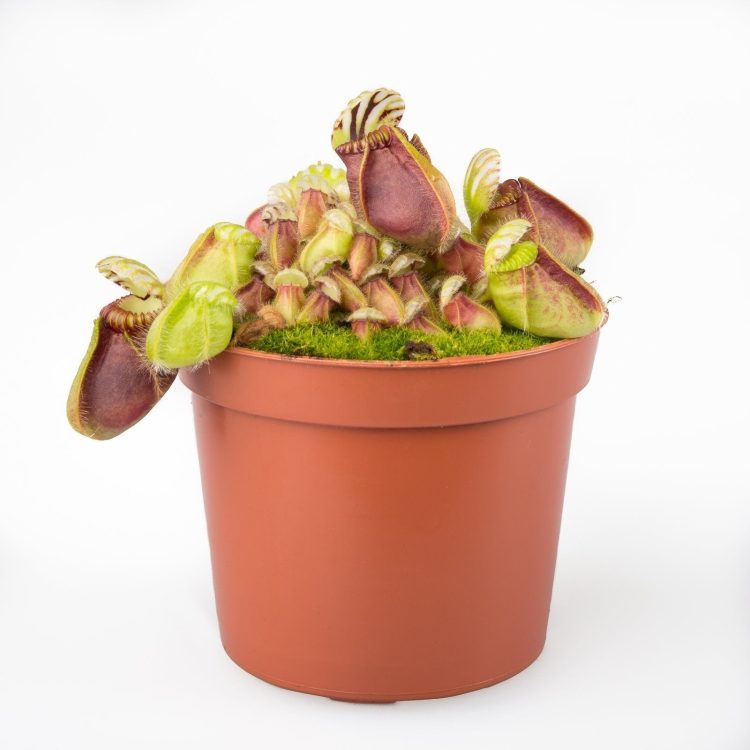Cephalotus
The Cephalotus or Albany Pitcher plant grows naturally in a temperate humid, subtropical climate characterised by cool, wet winters and dry summers. The plant grows in a humid environment amid grasses, mosses and shrubs on acidic soil. When the plant is in full sun, it accumulates anthocyanin that provides the red colour of its cups. In nature, the plant grows in a mixture of sand and peat in bogs at the edges of freshwater wetlands, ditches and slow-flowing streams. The plant feeds on insects such as ants.
Showing the single result
Showing the single result
Cephalotus grows from subterranean rhizomes. It has two types of leaves, carnivorous and non-carnivorous leaves. The non-carnivorous leaves are usually produced in spring and are spear-shaped, but round non-carnivorous leaves are also produced in winter. These leaves provide photosynthesis and last only one year.
When the non-carnivorous leaves of Albany Pitcher are at their peak in terms of photosynthetic activity, the carnivorous leaves formed by the 1-6 cm large cups appear in summer and autumn (there are cultivars with larger cups). Although the cups are similar to those of Nepenthes, the cups are connected to stems at the back whereas in Nepenthes the cups are connected to stems at the bottom. The cups of the plants are densely packed and are usually at ground level. Read our Cephalotus care guide for growing instructions.

